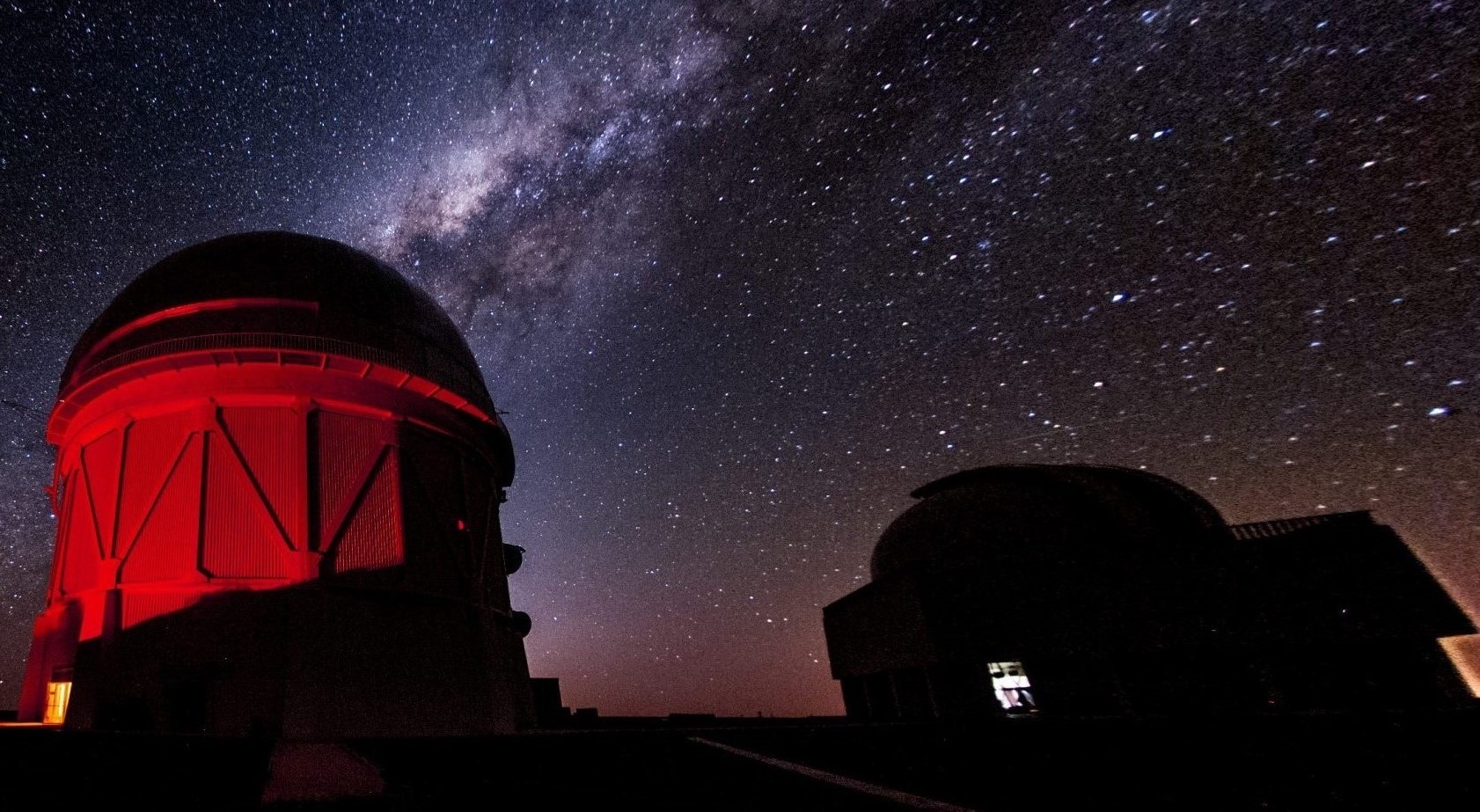
The Dark Energy Survey (DES) is an ambitious scientific endeavor that aims to unravel the mysteries surrounding dark energy in the universe. Led by an international team of astrophysicists, the DES is one of the most comprehensive surveys ever conducted to study the nature of dark energy – the elusive force that is believed to be responsible for the accelerated expansion of the universe.
In this article, we will delve into 11 surprising facts about the Dark Energy Survey (DES) that showcase its importance and impact on our understanding of the universe. From its innovative telescope design to the vast amount of data it has collected, the DES has revolutionized our knowledge about the cosmos and brought us closer to deciphering the enigma of dark energy.
Key Takeaways:
- The Dark Energy Survey (DES) uses a super camera to study dark energy and has found new galaxies and supernovae, sharing its data with the world for open science and collaboration.
- DES aims to create a 3D map of the universe, understand the fate of the universe, and study cosmic microwave background radiation to learn about the universe’s composition and evolution.
The Dark Energy Survey (DES) is a cosmological survey that aims to understand the nature of dark energy.
The Dark Energy Survey (DES) is a groundbreaking project that focuses on studying the mysterious force known as dark energy, which is believed to be responsible for the accelerated expansion of the universe. By observing distant galaxies and measuring their shapes and distances, DES aims to shed light on the properties of dark energy.
The Dark Energy Survey (DES) uses a powerful 570-megapixel camera known as the Dark Energy Camera (DECam).
The Dark Energy Camera (DECam) is one of the world’s most advanced astronomical cameras, specifically designed for the Dark Energy Survey. With its wide field of view and high sensitivity, DECam is able to capture detailed images of thousands of galaxies in a single snapshot, allowing scientists to study the effects of dark energy on large-scale structures.
The Dark Energy Survey (DES) covers an area of 5,000 square degrees of the southern sky.
The DES survey area spans a vast region of the southern sky, capturing data from a range of different celestial objects, including galaxies, supernovae, and galaxy clusters. This expansive coverage allows scientists to analyze a large sample size and gather valuable insights into the distribution of dark matter and the evolution of the universe.
The Dark Energy Survey (DES) consists of a collaboration of over 400 scientists from 25 institutions in 7 countries.
The DES project is a global scientific endeavor, bringing together researchers from around the world to analyze and interpret the data obtained from the survey. This collaborative effort allows for a diverse range of perspectives and expertise, pushing the boundaries of our understanding of dark energy.
The Dark Energy Survey (DES) has discovered numerous new supernovae and distant galaxies.
Through its extensive observations, DES has contributed to the discovery of numerous supernovae, which are crucial in studying the expansion rate of the universe. Additionally, DES has revealed distant galaxies that were previously unknown, providing astronomers with valuable data to further explore the mysteries of the cosmos.
The Dark Energy Survey (DES) data release provides open access to its findings.
One of the remarkable aspects of DES is its commitment to open science. The project releases its data and findings to the public, allowing scientists worldwide to access and analyze the information. This transparency fosters collaboration and allows for independent verification and further exploration of the survey’s results.
The Dark Energy Survey (DES) utilizes gravitational lensing to study dark matter.
Gravitational lensing is a phenomenon that occurs when the gravitational field of a massive object bends the path of light passing near it. DES utilizes this effect to map the distribution of dark matter in the universe, providing vital clues about its properties and interactions with other cosmic components.
The Dark Energy Survey (DES) aims to create the most accurate 3D map of the universe’s large-scale structure.
By combining data from DES observations and other astronomical surveys, scientists strive to create a comprehensive 3D map of the large-scale structure of the universe. This ambitious endeavor will greatly enhance our understanding of the cosmic web, the distribution of galaxies, and the role of dark energy in shaping the universe.
The Dark Energy Survey (DES) has observed over 400 million celestial objects.
Over the course of its observations, DES has collected data on more than 400 million celestial objects, including galaxies, stars, and quasars. This vast catalog of objects provides a wealth of information for astronomers to study the dynamics and evolution of the universe on a large scale.
The Dark Energy Survey (DES) has detected the subtle anisotropies in the cosmic microwave background radiation.
DES has contributed to our understanding of the cosmic microwave background radiation (CMB), the remnants of the Big Bang. By analyzing the anisotropies or tiny temperature fluctuations in the CMB, scientists can learn about the composition, age, and evolution of the universe.
The Dark Energy Survey (DES) provides insights into the fate of the universe.
Among its many objectives, DES aims to unravel the mystery of dark energy and its impact on the ultimate fate of the universe. By studying the expansion rate and large-scale structure, scientists hope to gain insights into whether the universe will continue expanding indefinitely or eventually undergo a collapse or cosmic crunch.
Conclusion
In conclusion, the Dark Energy Survey (DES) has provided us with fascinating insights and surprising facts about our universe. From mapping the distribution of dark matter to unveiling the expansion of the universe and studying the elusive dark energy, DES has revolutionized our understanding of the cosmos.
Through its innovative use of cutting-edge technology and collaboration between scientists from around the world, DES has significantly contributed to our knowledge of astrophysics. By examining millions of galaxies and measuring their shapes and distances, DES has allowed us to delve deeper into the mysteries of the universe.
As DES continues to collect and analyze more data, we can expect even more astonishing discoveries and a further refinement of our cosmological theories. The quest to unravel the nature of dark matter and dark energy is underway, thanks to the groundbreaking work being done by the Dark Energy Survey.
FAQs
1. What is the Dark Energy Survey (DES)?
The Dark Energy Survey (DES) is an international collaborative effort involving scientists from multiple institutions and countries. Its primary goal is to study the nature of dark energy and its impact on the expansion of the universe.
2. How does DES work?
DES uses a combination of ground-based telescopes and sophisticated imaging sensors to capture high-resolution images of the night sky. These images are then analyzed to study the shapes, positions, and distributions of galaxies, providing crucial insights into dark energy and dark matter.
3. What has DES discovered so far?
DES has made several groundbreaking discoveries, including mapping the distribution of dark matter, providing precise measurements of the expansion rate of the universe, and identifying hundreds of new supernovae. These findings have contributed significantly to our understanding of the cosmos.
4. Why is studying dark energy important?
Dark energy is believed to be the driving force behind the accelerated expansion of the universe. Understanding its nature is crucial for unraveling the fundamental principles governing our universe and could potentially lead to groundbreaking advancements in our understanding of physics and cosmology.
5. What are the future plans for DES?
The Dark Energy Survey is an ongoing project with plans to continue collecting data for several more years. The survey will expand its coverage and delve deeper into the mysteries of dark energy, dark matter, and the origins of the universe, further enriching our understanding of the cosmos.
Unraveling the secrets of our universe is a thrilling journey. Dive deeper into the enigmatic realm of dark energy, where cosmic forces shape the fate of everything. Explore the awe-inspiring large-scale structures that define our cosmic web. And don't forget about the invisible, yet omnipresent dark matter that holds galaxies together. Each topic offers a unique perspective on the grand mysteries that continue to captivate astronomers and cosmologists alike. So, which cosmic adventure will you embark on next?
Was this page helpful?
Our commitment to delivering trustworthy and engaging content is at the heart of what we do. Each fact on our site is contributed by real users like you, bringing a wealth of diverse insights and information. To ensure the highest standards of accuracy and reliability, our dedicated editors meticulously review each submission. This process guarantees that the facts we share are not only fascinating but also credible. Trust in our commitment to quality and authenticity as you explore and learn with us.


